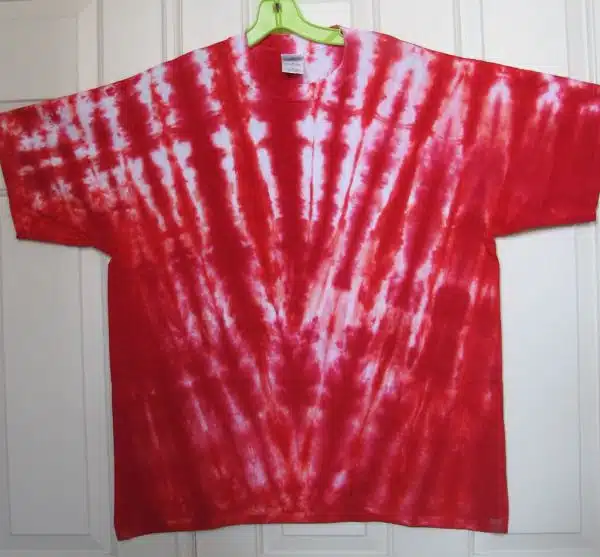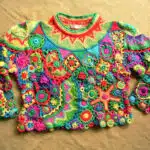As humans, we are always on the lookout for ways to simplify mundane tasks and reduce unnecessary clutter in our lives. One such task that we encounter on a daily basis is folding shirts. The process of folding a shirt may seem simple, but there are many techniques and methods that can be utilized to make the task more efficient and effective.
As a shirt folding expert/instructor, it is my pleasure to share with you four different ways to fold a shirt. Each method has its own unique benefits and can be adapted to suit your specific needs. By learning these techniques, you will not only save time but also create a neat and organized wardrobe. So let us dive into the world of shirt folding and discover the various possibilities!
The Basic Fold
As a shirt folding expert, I am thrilled to teach you the basics of folding a shirt. The basic fold is the most common and straightforward way to fold a shirt, and it is an essential skill that everyone should master. Not only does it make your closet look more organized, but it also helps you save space.
One of the benefits of the basic fold is that it makes your shirts look neat and tidy. You won’t have to worry about wrinkled shirts when you take them out of your closet to wear them. Additionally, this method is simple and quick, making it perfect for those who are always on-the-go.
While there are alternatives to the basic fold, such as rolling or hanging your shirts, nothing beats the classic appeal of a neatly folded shirt. It is a timeless way to store clothing that has been used for centuries. So why not learn from the best and master this traditional method? In the next section, we will explore another popular technique called “the military roll.”
The Military Roll
The Military Roll is a technique that is commonly used by members of the military to fold their clothes. It is a simple and efficient way to fold a shirt, making it easy to pack and store. The Military Roll involves folding the shirt in a specific way, and then rolling it up tightly.
The benefits of using the Military Roll are numerous. First, it saves space in your luggage or storage area. By rolling the shirt up tightly, you can fit more clothing into a smaller space. Second, it keeps your clothes wrinkle-free. Because the shirt is rolled tightly, there are no creases or wrinkles that can develop during storage or transportation. Finally, it makes packing and unpacking easier. When you arrive at your destination, simply unroll the shirt and it will be ready to wear.
If you are looking for Military Roll alternatives, there are several other techniques that you can try. One option is to simply fold your shirt in half horizontally and then fold it again vertically. This creates a neat rectangle that can be stacked with other clothing items. Another option is to use the KonMari method of folding, which involves folding clothes into small rectangles and stacking them vertically in drawers.
Next section: The KonMari Method
The Konmari Method
The KonMari Method, pioneered by Marie Kondo, is a philosophy of tidying that has gained immense popularity in recent years. The central tenet of this method is to only keep items that “spark joy” and discard anything that does not. This approach has numerous benefits, including reducing clutter and stress while increasing overall happiness and well-being.
One area where the KonMari Method can be particularly useful is in organizing one’s wardrobe. By using the “spark joy” principle when deciding what to keep, individuals can create a curated collection of clothing that they truly love and feel confident wearing. This approach also encourages thoughtful consumption, as individuals are less likely to make impulse purchases or hold onto items they no longer need.
A Konmari inspired wardrobe organization system involves folding clothes in such a way that they are visible and easily accessible. This system not only saves space but also helps prevent wrinkles and creases in clothing. When properly folded, clothes take up less room, making it easier to find specific items quickly. By following the principles of the KonMari Method when organizing their wardrobes, individuals can transform their spaces into peaceful sanctuaries where they can relax and recharge.
Transition: With a well-organized wardrobe using the KonMari Method, it becomes much easier to fold shirts in different ways. One popular technique for shirt folding is known as the d.i.y. flip and fold method.
The D.I.Y. Flip And Fold
The D.I.Y. Flip and Fold is a creative way to fold your shirts that requires the use of some DIY folding tools. To start, lay your shirt flat on a clean surface with the front facing down. Next, fold both sides of the shirt towards the middle, making sure that the sleeves are neatly stacked on top of each other.
Afterwards, fold the bottom of the shirt up towards the collar, ensuring that it is straight and even. This should create a rectangle shape with your shirt. Finally, flip your shirt over and fold it in half from left to right. Your shirt should now be compact and easy to store.
To add some variety to your folding techniques, try experimenting with creative folding techniques such as rolling or twisting your shirts before folding them using traditional methods. These techniques can help you save space in your closet while also adding some visual interest to your wardrobe.
By utilizing DIY folding tools and incorporating these creative folding techniques into your routine, you can become a master at organizing and storing your clothes efficiently. The next section will cover another minimalist fold that can help you save even more space in your closet.
The Minimalist Fold
Transition: Now that we have covered the D.I.Y. Flip and Fold, let us move on to another practical method of folding a shirt known as The Minimalist Fold.
The Benefits of Minimalist Lifestyle
Minimalism has been gaining popularity in recent years, and for good reason. Embracing a minimalist lifestyle is not only beneficial for one’s mental health but also for the environment. By living with fewer possessions and reducing unnecessary consumption, individuals can reduce their carbon footprint and contribute to sustainable living. The same principle applies to fashion choices. Adopting a minimalist wardrobe means investing in timeless pieces that can be worn repeatedly, rather than constantly purchasing fast-fashion items that will quickly go out of style or fall apart after a few wears.
Sustainable Fashion Choices
The Minimalist Fold is an ideal technique for those who appreciate simplicity and sustainability in their fashion choices. This fold allows shirts to take up less space in your wardrobe, which promotes better organization and helps you identify the pieces you own more easily. Additionally, by folding clothes properly, you can extend their lifespan by preventing wrinkles and creases from damaging the fabric over time. This means fewer trips to the store to replace old or damaged clothing items.
Transition: Now that we have discussed the benefits of minimalism in fashion, it’s time to learn how to fold a shirt using The Minimalist Fold technique.
Step-By-Step Guide To Folding A Shirt
Have you ever struggled to fold a shirt neatly? Whether you are preparing for a job interview, organizing your wardrobe, or packing for a trip, folding your shirts properly can make a big difference in your appearance and convenience. As a shirt folding expert, I would like to share with you some effective techniques for achieving a flawless fold.
Firstly, it is important to choose the right surface for folding your shirt. A flat and clean space such as a table or bed is ideal. Start by buttoning up the shirt and laying it down with the back side facing up. Next, fold the sleeves towards the center of the shirt so that they form two straight lines running parallel to each other. Then, fold both sides of the shirt inwards towards the center so that they meet at the back of the collar. Lastly, fold the bottom part of the shirt upwards until it reaches just below the collar.
Another useful technique is called “the military roll”. This method involves rolling your shirt tightly into a compact cylinder shape that saves space and minimizes wrinkles. Begin by placing your shirt face down on a flat surface and folding one sleeve inwards so that it runs along the side of your shirt. Repeat this step with the other sleeve on top of it. Then, fold half of your shirt upwards from its bottom edge so that it covers one-third of its length. Finally, tightly roll up your shirt from its bottom edge until it reaches its collar.
By mastering these folding techniques, you can easily organize your shirts in an efficient and attractive manner. Properly folded shirts not only save space but also make them easier to locate when needed. In our next section, we will provide you with some helpful tips for achieving a perfect fold every time without any hassle.
Tips For Achieving A Perfect Fold
Achieving a perfect fold can be an art form in itself, but with practice and perseverance, anyone can master it. To start, it’s important to have a clean and flat surface to work on. This will ensure that your folds are even and precise. It’s also helpful to have a good understanding of the material you’re folding, as each fabric has its own unique characteristics.
One way to add some creativity to your folding is by experimenting with different techniques. For example, instead of simply folding your shirt in half, try rolling it up tightly like a burrito or creating a triangular-shaped fold. These fun and unique methods not only look impressive but can also help save space in your drawers or luggage.
Common mistakes when folding include being too rough with the fabric which can cause wrinkles or not taking the time to properly align the edges before folding. Another mistake is overthinking the process which can lead to frustration and mistakes. Remember that practice makes perfect and with time, you’ll become more comfortable with the process.
Choosing the right folding method for your needs is essential. While there are many techniques to choose from, it’s important to consider what works best for you based on factors such as storage space, fabric type, and personal preference. With these tips in mind, you’ll be well on your way to achieving perfectly folded shirts every time!
Choosing The Right Folding Method For Your Needs
As the great philosopher Aristotle once said, “We are what we repeatedly do. Excellence, then, is not an act but a habit.” This holds true when it comes to folding shirts efficiently. However, not all shirts are made equal and therefore require different folding techniques.
Finding the right folding technique for different fabrics is essential in maintaining their quality and prolonging their lifespan. For example, delicate fabrics like silk or linen should be folded with care to avoid wrinkling or damaging the material. On the other hand, cotton or polyester blends can withstand a more rigorous folding method.
Tips for folding shirts efficiently include laying them flat on a surface before starting and ensuring that all buttons are buttoned up before folding. A 3 item numeric list in markdown format to emphasize this point would be:
- Use a flat surface such as a table or countertop.
- Smooth out any wrinkles before folding.
- Make sure all buttons are fastened before beginning.
In conclusion, mastering different shirt-folding techniques requires practice and patience. Next up, we will explore the differences between folding dress shirts vs t-shirts and how to ensure they both look sharp after being folded properly.
Folding Dress Shirts Vs. T-Shirts
- When folding dress shirts and t-shirts, there are differences in the techniques used to create neat folds.
- Speed of folding dress shirts is typically slower than with t-shirts, due to the fabric’s thickness.
- It is important to take into consideration the fabric thickness of the shirt when folding, as it affects the technique used to achieve a neat fold.
- Dress shirts require a specific technique of folding that results in a sharper, neater fold compared to t-shirts.
- T-shirts can be folded quickly and easily due to the thin fabric, but the fold may not be as neat as a dress shirt.
- The fabric thickness of the shirt impacts the speed and technique of folding, and is important to consider when folding dress shirts and t-shirts.
Creating Neat Folds
Properly folding clothes is an essential part of keeping them in good condition. This is especially true for dress shirts, which can easily wrinkle and lose their shape if not folded correctly. One way to ensure neat folds is by using a folding board. A folding board helps create uniform folds and makes the process faster and easier.
The importance of folding clothes cannot be overstated. Not only does it keep them looking their best, but it also saves space in your drawers or closet. When you fold your clothes neatly, you can fit more items in a smaller space, making it easier to find what you need when you need it. Using a folding board further enhances these benefits by creating consistent folds that are easy to stack.
When it comes to dress shirts, using a folding board is especially useful. Dress shirts often have delicate fabrics that require special care when folded to avoid wrinkles or creases. A folding board allows you to create precise folds that preserve the shirt’s shape and prevent damage from improper handling. By taking the time to fold your dress shirts properly with a folding board, you’ll save time in the long run by not having to iron out wrinkles or replace damaged clothing.
Speed Of Folding
As a shirt folding expert, it’s important to recognize that not all clothing items are created equal when it comes to folding. Dress shirts and t-shirts, for example, require different techniques for optimal results. One aspect to consider is the speed of folding. While it may seem like a minor detail, increasing efficiency with time-saving techniques can make a significant difference in your daily routine.
When comparing dress shirts and t-shirts, dress shirts typically take longer to fold due to their delicate fabrics and intricate details such as collars and cuffs. However, using a folding board can help speed up the process by creating consistent folds that are easy to stack. This technique not only saves time but also ensures that each shirt is folded neatly and uniformly.
On the other hand, t-shirts are generally easier and quicker to fold than dress shirts. Since they have fewer details and are made of more forgiving fabrics, a simple fold down the middle followed by folding the sleeves inward will do the trick. However, if you’re looking for even faster ways to fold t-shirts, there are various time-saving techniques available online that can help increase your efficiency.
In conclusion, while both dress shirts and t-shirts require proper folding techniques for optimal results, there is a difference in their speed of folding due to their unique characteristics. By using appropriate tools such as a folding board or seeking out time-saving techniques online, you can increase your efficiency and save valuable time in your daily routine while still maintaining the quality of your clothing items.
Fabric Thickness
As a shirt folding expert, it’s important to recognize that fabric thickness plays a significant role in the efficiency and quality of shirt folding. Dress shirts made with thinner fabrics are much easier to fold than those made with thicker materials. The benefits of using thin fabrics for dress shirts include less time spent on folding and the ability to create consistently neat folds. In contrast, thick fabrics require more effort and attention to detail, which can lead to longer folding times and potential creases or wrinkles.
Similarly, t-shirts made with thinner fabrics are also easier to fold than those made with thicker materials. However, the disadvantages of using thin fabrics for t-shirts include a lack of durability and potential transparency issues. On the other hand, t-shirts made with thicker materials offer greater durability but may take longer to fold due to their heavier weight. By understanding these differences in fabric thickness, shirt folders can choose appropriate techniques and tools that will provide optimal results while also saving time.
In conclusion, the fabric thickness is an important factor in determining the ease and speed of shirt folding. While thinner fabrics offer benefits such as faster folding times and consistent results, thicker fabrics may require more attention to detail but provide greater durability. As a shirt folding expert/instructor, it is essential to understand these differences in fabric thickness when teaching others proper folding techniques.
How To Fold Shirts For Travel
When it comes to travel, packing your suitcase efficiently can be a challenge. One of the biggest space-saving techniques is learning how to fold your shirts properly. Not only does efficient shirt folding save you space in your suitcase, but it also helps keep your clothes looking neat and wrinkle-free during transit.
Benefits of folding shirts extend beyond just saving space in your luggage. It also makes unpacking at your destination much easier and faster, as you can simply take out the folded shirts and place them directly into drawers or onto hangers. Additionally, neatly folded shirts are less likely to become wrinkled, which means less time spent ironing or steaming upon arrival.
Common problems while folding shirts include creating uneven folds, leaving wrinkles or creases, and taking up too much space in the suitcase. To avoid these issues, start by laying the shirt flat on a surface with the buttons facing down. Next, fold one side of the shirt over so that the sleeve lines up with the shoulder seam. Repeat on the other side before folding the bottom third of the shirt up towards the collar. Finally, fold in half from left to right.
Incorporating these techniques will not only improve your packing skills but also ensure that you arrive at your destination with neat and tidy clothing ready for wear. In our next section, we will discuss how to fold shirts for storage at home – an essential skill for anyone who wants to keep their closet organized and clutter-free!
Folding Shirts For Storage
When it comes to storing clothes, it is important to fold them properly to maximize storage space and prevent wrinkles. In this section, we will discuss some tips and techniques for folding shirts for storage.
Firstly, start with a clean and flat surface to avoid any wrinkles on the shirt. Lay the shirt face down with the sleeves extended outward. Fold the shirt in half by bringing the shoulders together, then fold the sleeves back along the sides of the shirt. Finally, fold the bottom of the shirt up towards the collar.
Another technique is known as the traditional fold. This method involves folding each sleeve so they meet at the center of the back of the shirt. Next, fold one side of the shirt inward towards the center, then repeat on the other side. Finally, fold in half from top to bottom.
Lastly, for those looking to save even more space, there is a technique called “military roll”. Start by laying the shirt face down with arms extended outward. Fold one side inward about halfway towards centerline, repeat on other side. Fold bottom of shirt upwards about two inches over itself and repeat until folded to desired size.
Following these tips and techniques will ensure your shirts are neatly folded and ready for storage space optimization. However, there are still some common mistakes that should be avoided when folding shirts which we will discuss in our subsequent section: Common Shirt Folding Mistakes To Avoid.
Common Shirt Folding Mistakes To Avoid
Avoiding mistakes is essential in achieving a well-folded shirt. One common mistake is folding the shirt unevenly, resulting in lopsided creases and an overall sloppy appearance. To ensure an even fold, smooth out any wrinkles or bumps before folding and use a flat surface to work on.
Another mistake is not properly aligning the collar and sleeves when folding. This can result in unsightly creases and wrinkles that may be difficult to remove. Best practices include making sure the collar is straight and the sleeves are aligned with the body of the shirt before beginning the fold.
Lastly, it’s important to avoid over-handling the shirt during folding. Excessive tugging and pulling can stretch out the fabric and create unnecessary wrinkles. Instead, gently guide the folds into place and use light pressure to smooth out any creases. With these tips in mind, you can achieve a perfectly folded shirt every time.
Moving forward, let’s discuss troubleshooting: what to do when your shirts won’t fold.
Troubleshooting: What To Do When Your Shirts Won’t Fold
- Assessing the Problem: To begin, it is important to assess the type of fabric the shirt is made from as different fabrics may require different folding techniques.
- Ironing the Shirt: To ensure the shirt looks neat and is easier to fold, it is recommended to iron any wrinkles out of the fabric.
- Folding with Assistance: If folding the shirt alone is proving difficult, enlisting the help of another person can make the task easier and faster.
- Re-Folding Method: For more stubborn shirts, try refolding the shirt using the same technique a few times to ensure the folds are even and crisp.
Assessing The Problem
Assessing the Problem is an important step in troubleshooting when your shirts won’t fold. Before proceeding, it is essential to identify the root cause of the issue. One effective way to do so is to apply problem-solving techniques such as asking questions and analyzing the situation.
Common mistakes that people make when folding shirts include not using a flat surface, not tucking in sleeves properly, and not aligning collars and shoulders. These errors can lead to wrinkles, uneven folds, and a generally untidy appearance. By recognizing these mistakes, one can avoid them in the future and improve their shirt folding skills.
In conclusion, by effectively assessing the problem and identifying common mistakes, one can troubleshoot shirt folding issues with ease. Remember to take your time and follow proper techniques for a clean and neat result every time.
Ironing The Shirt
As a shirt folding expert, it is important to note that ironing the shirt plays a crucial role in achieving a neat and tidy appearance. Ironing techniques vary depending on the fabric type, but it generally involves applying heat and pressure to smooth out wrinkles and creases. The benefits of ironing are numerous, including improving the overall look of the garment, making it easier to fold and store, and extending its lifespan.
When troubleshooting shirt folding issues, ironing should be considered as one of the possible solutions. If your shirts won’t fold neatly despite proper folding techniques, it may be due to stubborn wrinkles or creases that can only be removed through ironing. It is important to note that ironing should not replace proper folding techniques but rather complement them.
To ensure optimal results when ironing your shirts, it is essential to follow proper techniques such as using the right heat setting for your fabric type and applying pressure evenly throughout the garment. By incorporating ironing into your shirt care routine, you can enjoy the many benefits it offers while avoiding common issues that arise from poorly maintained garments.
How To Teach Kids To Fold Shirts
Did you know that teaching kids how to fold shirts not only helps them develop their motor skills but also teaches them responsibility? According to a study conducted by the National Association for the Education of Young Children, children who learn household chores at an early age are more likely to become responsible and self-reliant adults. Thus, it is essential to teach your children how to fold shirts.
Teaching techniques for folding shirts vary depending on the child’s age. For younger kids, it is best to use age-appropriate methods such as visual aids and simple instructions. For instance, you can use a stuffed animal or a paper shirt to demonstrate how to fold a shirt. Meanwhile, older kids can be taught through hands-on practice and repetition. You can create a fun game out of it by timing them and challenging them to beat their previous records.
It is also important to note that teaching kids how to fold shirts should not be a chore but rather an enjoyable activity for both the parent and child. You can play some music or tell stories while folding clothes together. Not only will this make the task more enjoyable, but it will also create a positive association with household chores in your child’s mind.
Transition: Now that your child has learned how to properly fold shirts, it’s time to take things up a notch by repurposing old clothing items. In the next section, we’ll explore some creative upcycling ideas for old shirts that you can do with your kids.
Upcycling Ideas For Old Shirts
As a shirt folding expert, I know that old shirts can be transformed into something new and exciting through upcycling. Upcycling ideas for old shirts are endless, and with a little creativity, you can turn them into unique and stylish items. From home decor to fashion accessories, there are many creative projects you can undertake to repurpose your old shirts.
One of the most popular upcycling ideas for old shirts is creating a quilt or throw. By cutting your old shirts into squares or rectangles and sewing them together, you can create a cozy blanket that not only keeps you warm but also adds character to your space. Another great project is turning your old shirts into tote bags. Simply cut off the sleeves and neckline, sew the bottom shut, and add handles for an eco-friendly bag that’s perfect for groceries or beach trips.
Finally, if you’re looking for a quick and easy project, consider making headbands or scrunchies out of your old shirts. Cut thin strips of fabric from the sleeves or body of the shirt, twist them together, and sew the ends together to make a stylish accessory that’s both functional and fashionable. With these upcycling ideas in mind, you’ll never have to throw away another shirt again. Get creative and transform your old clothes into something new!
Conclusion
Shirt folding is an essential skill that everyone should learn. Whether you are a minimalist, a fashion enthusiast, or simply someone who wants to keep their closet organized, knowing how to fold shirts properly can make a huge difference. In this article, we have covered four different shirt folding techniques that you can try out and choose the one that works best for you.
The Basic Fold is perfect for those who want a simple and quick method of folding shirts. The Military Roll is great for saving space in your closet or suitcase while also keeping your shirts wrinkle-free. The KonMari Method takes a more intentional approach to folding and emphasizes the importance of decluttering your wardrobe. Lastly, the D.I.Y. Flip and Fold is perfect for those who want to add some creativity and personal touch to their shirt folding routine.
As a shirt folding expert/instructor, I encourage you to practice these techniques regularly until they become second nature to you. Remember that consistency is key when it comes to keeping your closet organized and tidy. Avoid common mistakes such as overstuffing your drawers or hangers and not using proper folding methods.
In conclusion, mastering the art of shirt folding can help simplify your life by making your closet more organized and easy to navigate. You can even upcycle old shirts into creative projects once you’ve mastered these techniques! So go ahead and try out these different methods until you find the one that suits you best – happy folding!
Image Credits
- “V-fold shibori t-shirt, red/white” by deb roby (featured)

























![How To Wash And Care For White Clothes 25 The only genuine borax soap cleanses hygienically saves the clothes and hands. 20 Mule-Team brand Boraxo white laundry soap [front]](https://green-life.blog/wp-content/uploads/2023/05/YDXLLCovnOjq-150x150.jpg.webp)



